PROTECT YOUR DNA WITH QUANTUM TECHNOLOGY
Orgo-Life the new way to the future Advertising by AdpathwayIn an average summer season, I plant more zinnia seeds than any others by at least double. They are so easy to grow. And they provide a ton of color and personality to my flower beds and summer cutting garden. Of all the many varieties you can grow, cactus zinnias are some of the most colorful and flamboyant flowers around.
Zinnias come in a wide range of colors, sizes, and petal formations. Varieties span from the tiny but spunky ‘Thumbellina’ to the grand ‘Benary’s Giant.’ I could plant a whole bed of zinnias and never get tired of them.
The best thing about these plants is the amount of color and sheer volume of flowers they produce. One plant can produce dozens of flowers, even the larger cultivars! When it comes to big, flashy flowers, cactus zinnias are among the top contenders.
Cactus Flower Blend Zinnia

Cactus Flower Blend Zinnia Seeds
Thumbelina Zinnia

Benary’s Giant Blend Zinnia

Benary’s Giant Blend Zinnia Seeds
Cactus Zinnia Overview

|
Plant Type Annual Family Asteraceae Genus Zinnia Species Elegans |
Native Area North and Central America Exposure Full sun Height 30”-40” Watering Requirements Moderate |
Pests & Diseases Aphids, spider mites, whiteflies, armyworms, leafhoppers, Japanese beetles Maintenance Low Soil Type Loamy, fertile, well-drained Hardiness Zone 2-11 |
What Is It?
Cactus zinnias are a distinctive type of zinnia, characterized by their large and unique flowers. They’re sturdy plants with oversized blooms that come in a variety of bold, noteworthy shades. Horticulturists have developed these stunning cultivars from the Zinnia elegans species for their uncommonly beautiful form.
Characteristics
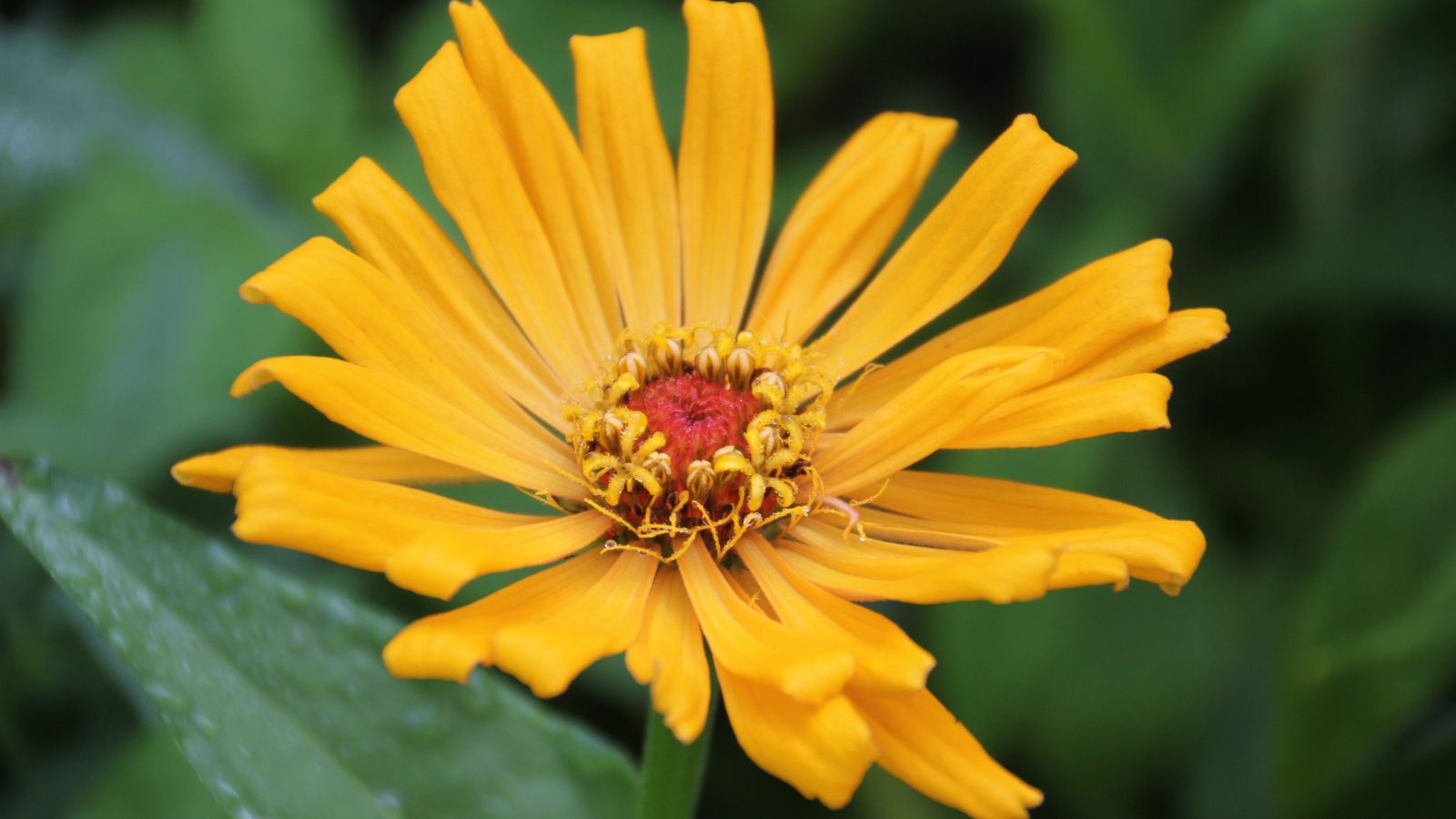 They bloom from summer through the first fall frost.
They bloom from summer through the first fall frost.Cactus zinnias are large plants growing up to 40 inches tall. While they are not the tallest variety, they come reasonably close. They bloom from early summer until frost, producing a large number of flowers throughout that time.
The plants aren’t the only thing that is larger than average. Cactus zinnia flowers are among the largest of the species. The blooms span four to six inches across and come in a range of colors, including pink, white, red, orange, yellow, and purple.
The most noteworthy characteristic of this variety is the long, narrow, fringe-like petals. They aren’t named cactus for any relationship to an actual cactus. Instead, they’re named such because of how closely they resemble cactus-form dahlias.
These are fast growers, like most zinnias, and they don’t take long to bloom. About two months after planting, you should start to see developing buds. With proper care, they will bloom continuously. They have sturdy stems that are great for cutting.

Native Area
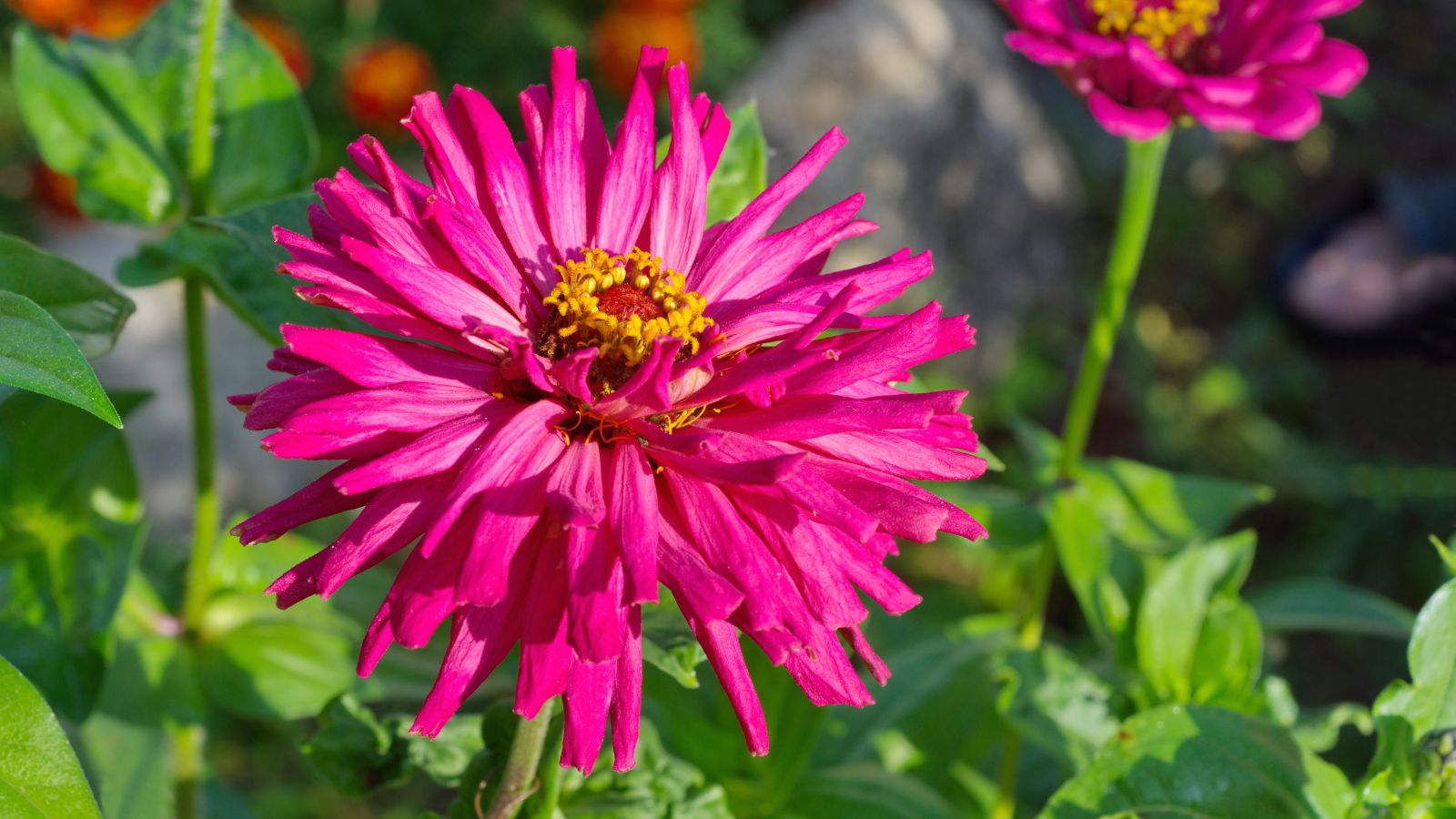 They are native to North America.
They are native to North America.Cactus zinnias are hybrids, so this particular form is not naturally occurring. However, the species Z. elegans is native to Central and southern North America, particularly Mexico. They typically favor semi-arid climates.
Planting
Spring is the best time to start your cactus zinnias. These annuals love warm weather and are easy to sow in your garden beds directly. Although they offer a wider variety, these aren’t the best choice for container gardens, but they will grow well in larger raised beds.
Remember to leave ample space when planting to allow for spreading out. With proper tending, they can grow large and shrubby. Since the larger plants produce the most flowers, this is the desirable state.
Transplanting
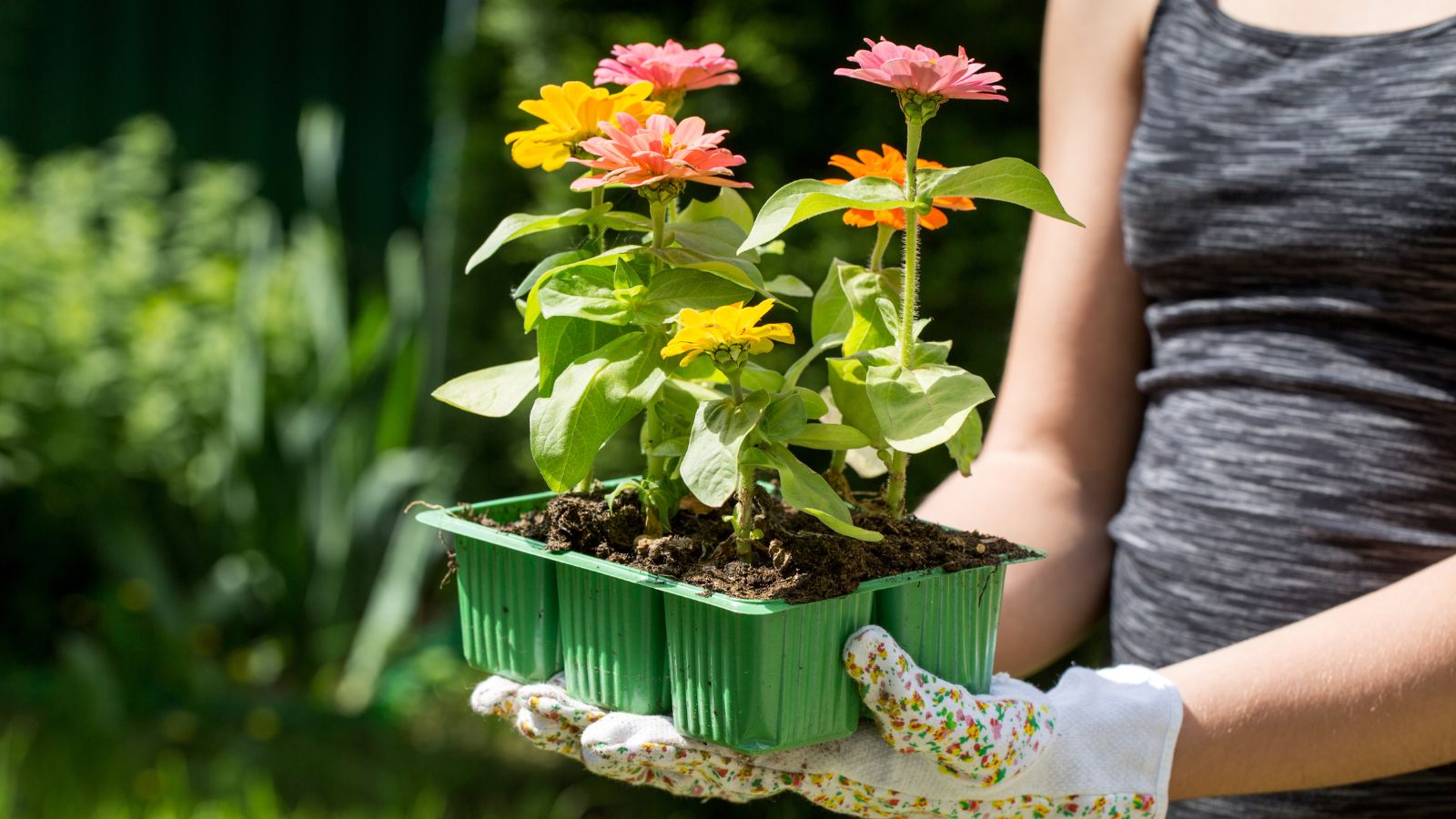 You can start them earlier indoors in cool climates.
You can start them earlier indoors in cool climates.It’s exceptionally easy to start these right in the garden. But for those in cooler climates, you may want to get them started earlier, indoors. In this event, when it’s time to transplant, work some fertilizer into the soil at planting time.
Loosen the soil in the area you will plant your zinnias and dig holes that are as deep and twice as wide as the root balls. Place your plants 18″-24″ apart and backfill. Lightly tamp down the soil and water thoroughly.
Growing From Seed
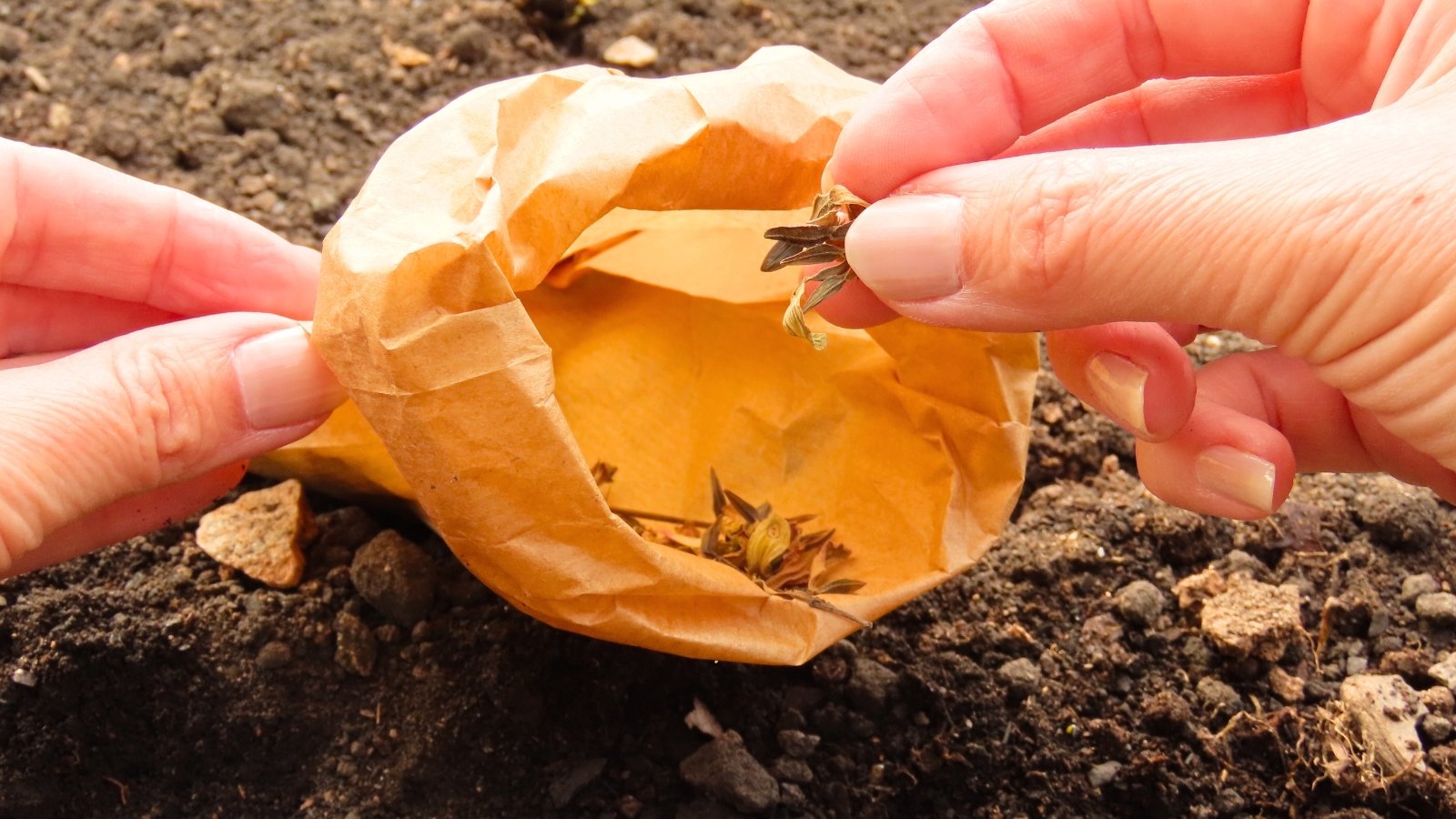 Seeds need warm, moist soil to germinate.
Seeds need warm, moist soil to germinate.Zinnias are easy to grow from seeds. In my experience, directly sowing them in the garden is a highly effective method. If you live in a mild climate region, simply wait until the soil warms in spring to about 64°F (17°C). Then, directly sow your seeds in the garden beds where you want them to grow.
Amend your soil in advance with nutrient-rich compost. Zinnias like rich, loamy soil. Sow your seeds about 1/4″ deep, at intervals of 18″. I like to plant two seeds per hole, and then thin them later.
Keep the soil moist, but not soggy, while your seeds germinate. This usually takes less than a week in warm soil. It can take up to two weeks if your soil is still cool. Once your seedlings emerge, thin them out, leaving the most vigorous seedlings and removing the weaker ones.
Keep your young plants moist, but be cautious not to overwater them. This is particularly important if you have clay soil, as overwatering can easily lead to root rot.
If you live in a cooler climate and want to start your zinnias early in the season, there is nothing wrong with starting them indoors. It just requires a little more attention. You’ll need a warm spot with indirect light, or a heating mat and grow light.
Sow your seeds in a well-draining potting or seed-starting mix. Keep the soil lightly moist, but avoid allowing it to remain wet. Zinnia seedlings are vulnerable to damping off if their soil stays too wet. Wait until the outdoor soil has warmed to 65°F (18°C) before transplanting.
How to Grow
Cactus zinnias are easy to grow, but flourish under a specific set of ideal conditions. Once they are mature and blooming, they are a joy to behold. They’re also an excellent food source for pollinators and other beneficial insects.
Light
 Provide at least six to eight hours of sunlight per day.
Provide at least six to eight hours of sunlight per day.For the biggest, best, and most abundant flowers, zinnias need six to eight hours of sun daily. Without sufficient light, your plants may become weak and leggy, producing fewer flowers.
Sun promotes strong, sturdy stems, especially for tall varieties like cactus zinnias. It also helps to minimize the risk of fungal diseases as it reduces the moisture on leaves.
Water
 These flowers are drought-tolerant, but they bloom best with regular moisture.
These flowers are drought-tolerant, but they bloom best with regular moisture.Zinnias are relatively drought-tolerant, but they prefer moderate moisture. For maximum blooms, proper watering is a crucial factor.
Early morning watering is best, and watering at the soil level is essential. Overhead watering leaves foliage wet and more prone to fungal issues. By watering early in the day, any water on the foliage has ample time to dry before nightfall.
In the absence of regular rainfall, water your zinnias twice a week. While you don’t need to water frequently, you should water deeply when you do. Soak the soil, then wait for the top to dry out again before repeating.
Soil
 Ensure proper drainage with compost and perlite.
Ensure proper drainage with compost and perlite.Zinnias prefer soil that is light and has good drainage, but also is moderately fertile. Loose or sandy loam is ideal; clay is not. If your soil contains a high amount of clay, amend it with a generous amount of compost and other loose materials, such as sand or perlite. You want to aim for soil that stays moist but drains freely. Wet soil can lead to root rot.
Your soil should be moderately fertile, but not too nitrogen-heavy. Too much nitrogen leads to excessive green growth and fewer flowers. A slightly acidic pH is also preferable.
Temperature and Humidity
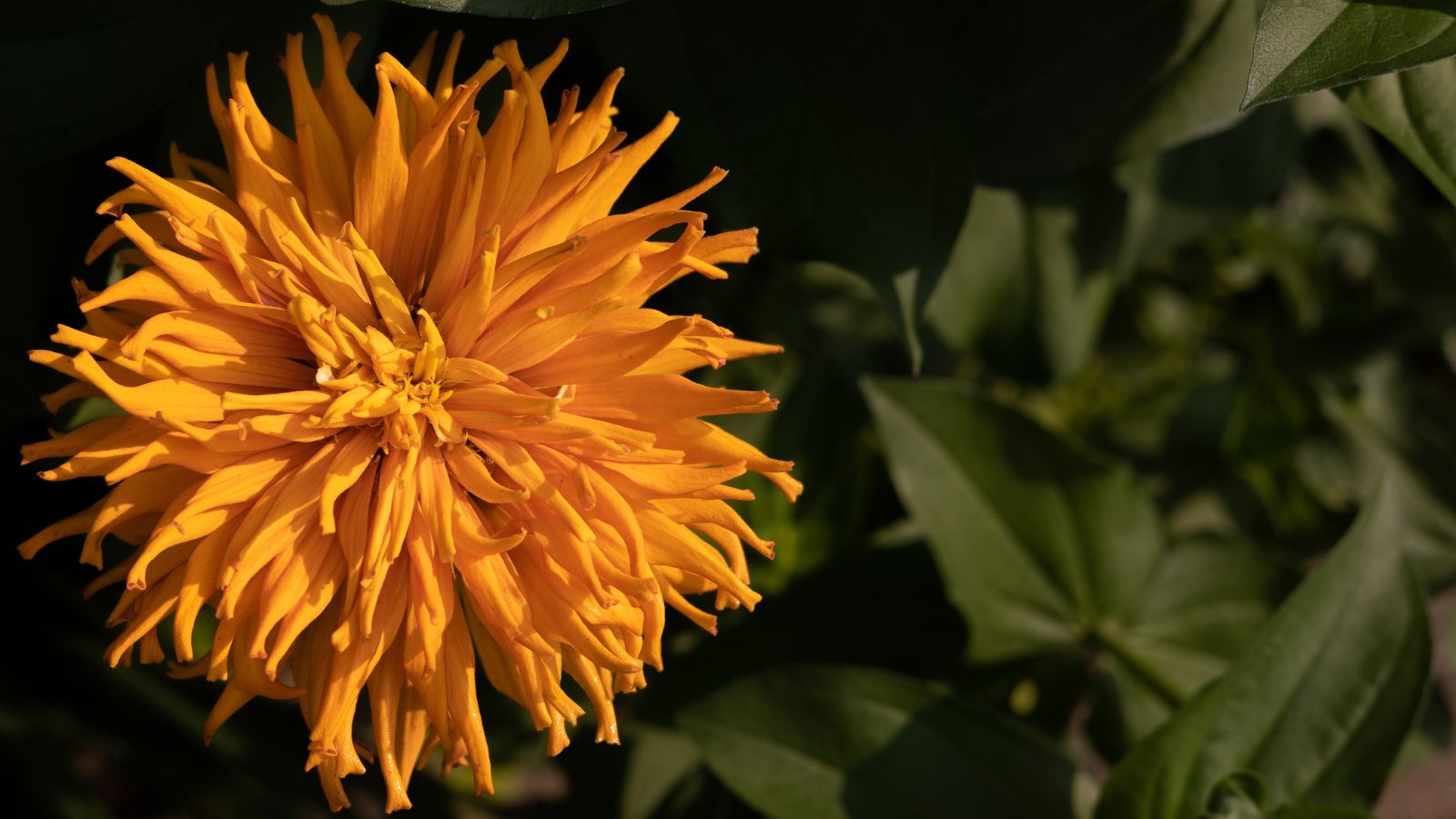 Ideal temperatures are 70 to 90°F.
Ideal temperatures are 70 to 90°F.Cactus zinnias are best suited for warm, dry climates. They tolerate heat well and germinate fastest in warm soil. The ideal temperatures for maximum growth are 70 to 90°F (21-32°C) during the day and 60-70°F (16-21°C) at night.
Zinnias are not frost-tolerant, so it’s essential to wait until there is no chance of a late freeze before planting or transplanting. They may stop growing or flowering in extreme heat, but will resume with adequate water and mulch to keep the roots cool.
They prefer moderate to low humidity, ideally. High humidity can exacerbate issues such as powdery mildew and botrytis, as well as other fungal diseases. In humid climates, make sure your plants have plenty of ventilation.
Fertilizing
 Use more potassium and phosphorus during the flowering stage.
Use more potassium and phosphorus during the flowering stage.At planting time, it’s a great idea to mix some compost or manure into the soil. This will give your cactus zinnias a strong start. You can also opt for a balanced fertilizer at this time.
After that initial application, switch to a formula with lower nitrogen. A higher ratio of potassium and phosphorus will produce stronger, more bountiful flowers. Fertilize every four to six weeks.
Maintenance
 Regular deadheading promotes more floral production.
Regular deadheading promotes more floral production.Deadheading is the most crucial maintenance practice to get into with your zinnias. The more you deadhead, the more the plant will branch. More branches mean more blooms.
When you deadhead, don’t just pop the flower off the top of the stem. Cut the stem all the way down to a node where another shoot is forming. This will keep your zinnias full and bushy, and producing more flowers.
Propagation
 Clone your plants with cuttings.
Clone your plants with cuttings.The most effective way to propagate zinnias is by seed. It’s possible to use cuttings, but it’s highly unreliable. The only reason to do this is to ensure that you have an exact clone of the parent plant. It often is ineffective, though.
Popular Varieties
Cactus zinnias come in a wide range of colors, and it’s common to find mixed varieties for sale. Here are some of the most striking and popular ones that are easier to find as individual varieties.
‘Redman Super Cactus’
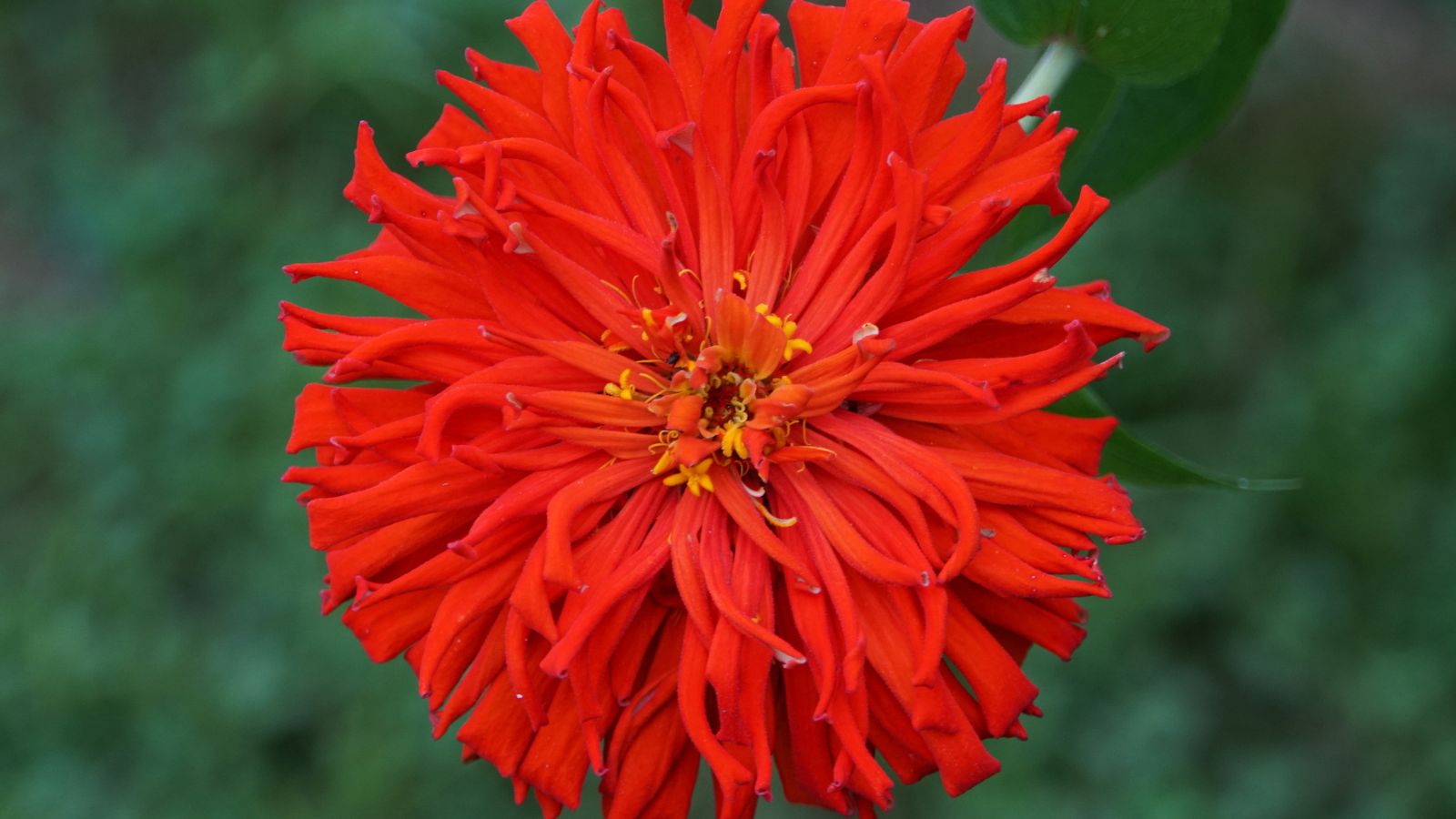 This is one of the biggest zinnia cultivars.
This is one of the biggest zinnia cultivars.‘Redman Super Cactus’ is one of the largest cultivars of this and all forms of zinnias. The blooms are a vibrant, fire-engine red and can reach up to six inches in diameter. This is an incredible bloomer and typically has a spread of about 18″ and a height of 24″.
‘Inca’
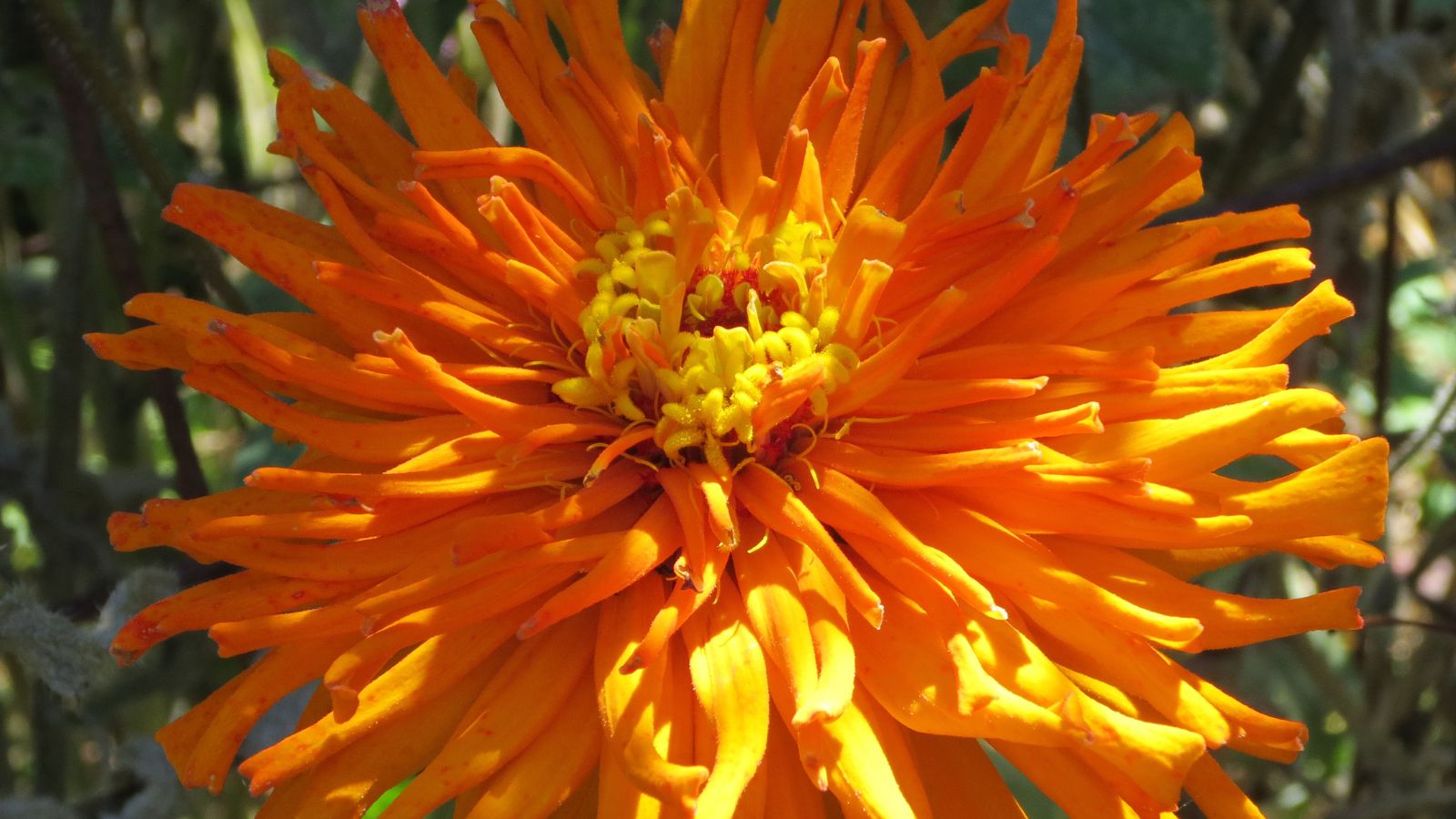 This cultivar is extra vigorous.
This cultivar is extra vigorous.‘Inca’ is a fabulous variety with bold orange petals around a brilliant yellow crown. The center is red, creating a brilliant combination of warm, exciting colors. This is a vigorous cultivar and an excellent bloomer.
‘Lilac Empress’
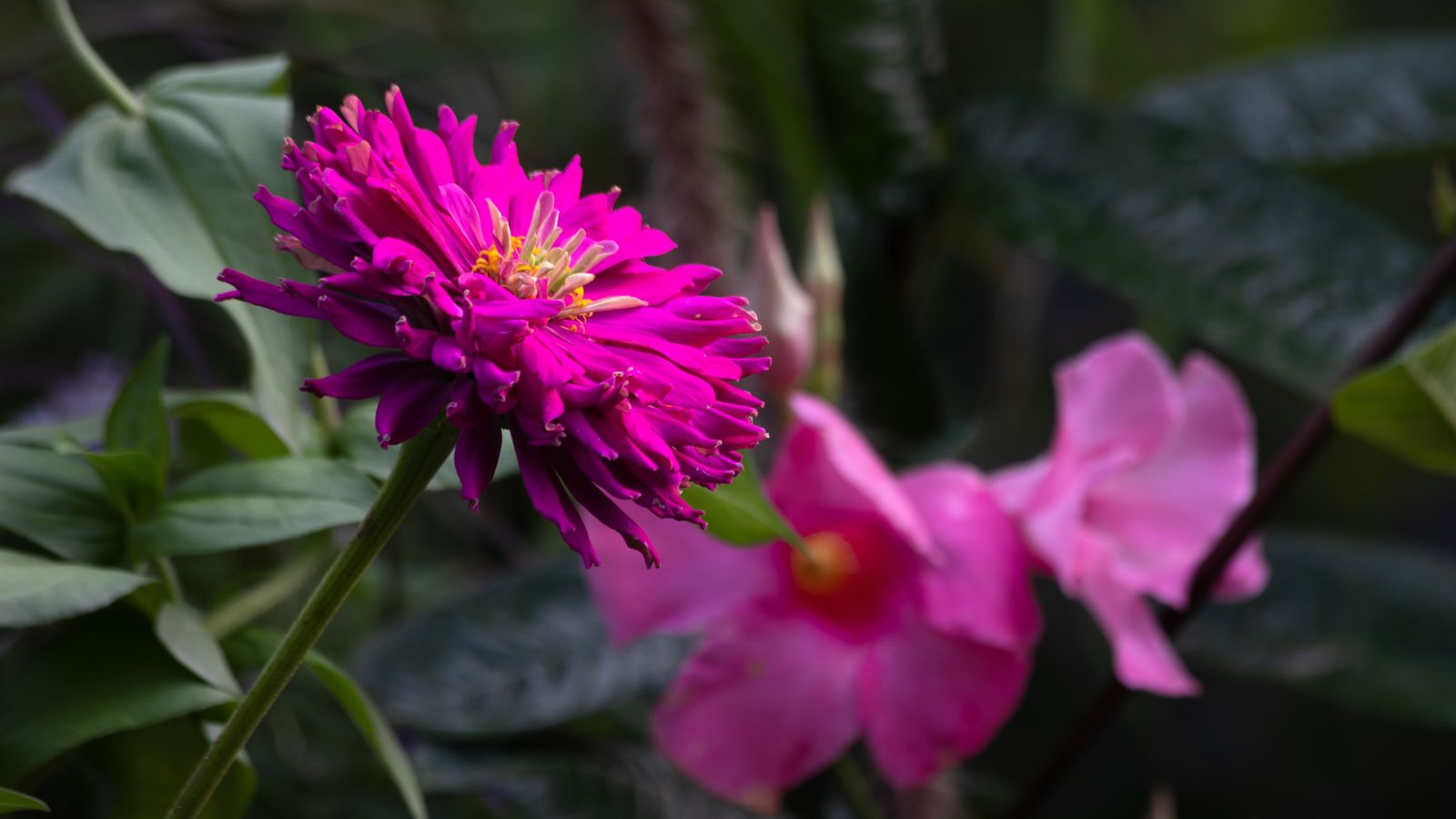 Yellow centers contrast with the bright magenta petals.
Yellow centers contrast with the bright magenta petals.These massive four to six-inch blooms make a great focal point in the garden. ‘Lilac Empress’ is a flower with lots of personality. The oversized blooms are bright magenta; the color deepens and takes on more purple toward the ends of the petals.
‘SunGod’
 The double flowers resemble a chrysanthemum.
The double flowers resemble a chrysanthemum.‘SunGod’ is an extra-special cultivar with full double flowers that resemble a chrysanthemum. Big, bold, and glowing gold, this cactus zinnia deserves center stage, wherever you plant it!
Common Problems
Cactus zinnias are sturdy plants, and under ideal conditions, they are generally free from pests and diseases. If you’re growing them under less-than-ideal circumstances, there are some issues to look out for.
Pests
 Pests can be removed with a heavy spray of water.
Pests can be removed with a heavy spray of water.The insects I’ve noticed that are most destructive to zinnias in my region are whiteflies and armyworms. Whiteflies are easiest to control. Hanging yellow sticky traps in the vicinity is typically sufficient to reduce their populations, but these also catch other pollinators that are attracted to yellow.
Armyworms are a type of moth larvae, and they can be challenging to handle. They defoliate leaves quickly and can decimate a plant in a short period. You can attempt to control them with neem oil, but the most effective way to get rid of them is to pull the affected plants. Dispose of them away from your garden.
In dry, warm climates, spider mites are sometimes an issue. You can combat these with neem oil or miticides. They dislike humidity and moisture, so you can often knock down populations by spraying your plants with water, and keep the soil around your zinnias moist.
[div]
Leafhoppers and Japanese beetles also snack on zinnia plants. These are large enough to remove by hand. They are less common, but leafhoppers can spread a virus known as aster yellows disease.

Diseases
 Humid climates and overwatering may predispose the plants to fungal diseases,
Humid climates and overwatering may predispose the plants to fungal diseases,The most serious disease issues for cactus zinnias are fungal diseases. Because they prefer low to moderate humidity, these issues can crop up in more humid climates. Powdery mildew is the most common.
[/div]
Powdery mildew is a type of white mold that grows on plants in warm, humid environments. Other fungal issues include leaf spot, rust, and botrytis blight. These are all the result of excess moisture and low ventilation.
It’s important to water at the soil level, not overhead, to avoid these issues. Plant them in full sun and leave adequate space between plants. If you struggle with fungal issues, you can treat them with a copper-based fungicide. It’s always best to remove affected plants to prevent the spread of the fungus.
Aster yellows (spread by leafhoppers) is an incurable disease that causes distorted blooms. If you notice strangely shaped flowers and twisted foliage, remove your plants. Dispose of them in the trash and do not compost them.
Frequently Asked Questions
Zinnias mix well with sunflowers, marigolds, and other plants that thrive in hot, sunny conditions and moderate moisture.
Yes, zinnias are safe for pets and people. In fact, the flowers are edible.
Zinnias are annual flowering plants. You can collect seeds in the fall and plant again in the spring, but they are not frost-tolerant.


 2 weeks ago
10
2 weeks ago
10





















 English (US) ·
English (US) ·  French (CA) ·
French (CA) ·